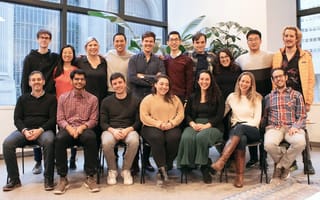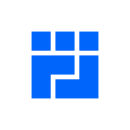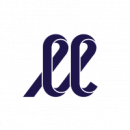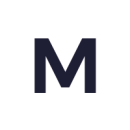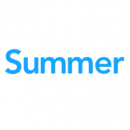There are engineering teams with diverse professional backgrounds, and then there’s Kristi Nanco’s team at MANTL, which counts former fire rangers, military members and finance consultants among its members.
Just about every company is working with machine learning, but few have ambitions equal to Tesseract Health’s, where Avery Pelle and his team are building a device designed to diagnose diseases using retinal scans.
New York has no shortage of B2B SaaS companies, but few are bringing an entirely new industry online. That’s what June Wang and her team are doing over at wholesale cannabis industry ordering platform LeafLink.
When it comes to starting or growing a career, not every company provides the chance to work on a team with diverse backgrounds, build potentially groundbreaking technology or pioneer a new industry. Nanco, Pelle and Wang all do, and they’re not alone. Continue reading to learn about six New York tech companies that give engineers the chance to do exciting, impactful work on unique teams.
Cityblock Health is literally betting that it can help people live healthier lives and drive down health insurance costs. The company manages the care of Medicaid and lower-income Medicare participants in partnership with community organizations. Cityblock absorbs the costs if care is more expensive and splits the savings with insurers if it’s cheaper.
Give us a bit of insight into your tech stack. What are some of your favorite tech tools your team is using?
The majority of our systems use PostgreSQL, Node.js, GraphQL and React hosted on GCP with Pub/Sub and Apollo Federation bringing our services together. What is great about our stack is that it is constantly evolving! We always encourage teams to pick the right tool for the job, and some teams use Python and Airflow, as well as some Express.js services.
What’s the most interesting or challenging project you’re working on right now, and what do you enjoy most about it?
Software architecture is something that I’m deeply passionate about. In our rapid growth stage, there are always new challenges and improvements to be made to our systems. We are very excited to have recently started our brand new “Architecture Guild” in order to intentionally and collaboratively evolve our architecture. Arch Guild is a “Lean Coffee” style forum where all engineers are welcome to introduce and discuss topics related to our current and future architecture. It is always amazing to see the level of respect and collaboration in Arch Guild and I’m excited for what we are getting to build together.
What’s something unique about your team?
From my first week at Cityblock, I knew I was joining a special group of Cityfolx. Everyone is deeply committed to our mission, to our members and to each other. The level of respect, inclusivity and collaboration is amazing. As a member of the LatinX community, I have been moved by the genuine focus — and execution — on building a diverse team with folks from all walks of life.
LeafLink is injecting some tech into the cannabis industry with its B2B wholesale ordering platform, which is designed to make it easier for brands, retailers and distributors to manage their operations and grow their businesses. According to the company its platform is used by over 6,200 cannabis retailers and over 2,300 brands.
Give us a bit of insight into your tech stack. What are some of your favorite tech tools your team is using?
I’m on the front-end team, and we use Vue.js to build out our web application. Having worked professionally with React in the past, I was astonished at how simple the learning curve was. It’s very lightweight and elegant, and the growing number of communities definitely makes creating modern web applications faster. There’s also an in-house components library that different applications at LeafLink leverage. The components library is showcased using Storybook, which makes it easier to collaborate with product designers.
We also use TypeScript, SCSS, Django, Redis, Postgres, GraphQL, and more. All of our apps are containerized so it’s easy for new engineers to hit the ground running. The ease of use of our tech stack is the result of having a team that listens to team feedback.
What’s the most interesting or challenging project you’re working on right now, and what do you enjoy most about it?
The engineering team has been constantly expanding our components library and consolidating pieces of code from different repositories. This is intricate work that yields rewarding results. Having a centralized location that acts as the source of truth for both engineers and product designers is instrumental to the LeafLink brand. Beyond building product-driven features, I really enjoy contributing to our core tools, which different platforms at LeafLink utilize.
What’s something unique about your team?
Everyone on the front-end team is involved in the architectural decisions we make here. We have a bi-weekly sync to discuss techniques, tips, strategies and demo any projects we’re working on. Aside from the daily contribution to our respective pods, we also come up with objectives as a group or break out into smaller committees. Everyone can contribute to what they’re most excited about and help build roadmaps for the front-end team. This could be anything from bug squashing to planning out what our migration to Vue 3 would look like.
Stock options are part and parcel of just about every tech company compensation package, but not all employees get to realize the value of those options. EquityZen is out to change that with its marketplace that connects investors with shareholders of private companies.
Give us a bit of insight into your tech stack. What are some of your favorite tech tools your team is using?
On the application side, we’re Python and React power users! Our main application leverages Django, Redis, Celery and Postgres. On the API side, we’re working with the Graphene library to help build out GraphQL schemas that our client can consume. We’re also exploring using the FastAPI framework to build our newer services. Our infrastructure is managed by Kubernetes, AWS and Docker. We’ve built and iterated on some awesome internal tooling, such as pull request test environments, test data manifests and a slackbot to help manage deployments.
What’s the most interesting or challenging project you’re working on right now, and what do you enjoy most about it?
I’m focused on empowering our users, both internal and external. Navigating the complex financial space is a major challenge, but our company-wide collaboration enables us to find solutions and be successful. I love looking at the big picture and figuring out where each individual puzzle piece goes.
What’s something unique about your team?
Our bi-weekly engineering town halls. It’s an open-format gathering where anyone on the team can bring up a topic for discussion. Some examples of topics include a proposal for a major architectural change, asking why a certain feature or model was built a certain way or an identified issue that needs discussion to resolve.
The prevalence of mobile banking and online advisors makes it easy to think that all banks are operating on the cutting-edge of technology. That’s not exactly the case, though, which is why MANTL has created software that streamlines the process of opening accounts at banks and credit unions.
Give us a bit of insight into your tech stack. What are some of your favorite tech tools your team is using?
MANTL uses Node.js on the back end, React.js on the front end, microservice architecture across the application, Postgres, Kubernetes and Notion for documentation, along with a few other technologies. We have a vast TypeScript codebase. Learning this language has been very rewarding. I save time developing through limiting runtime errors by writing type-safe code, which I use to focus on solving problems.
What’s the most interesting or challenging project you’re working on right now, and what do you enjoy most about it?
Currently, I’m working on transitioning some of our clients from an older version of our system to the newest version. The latest version offers more products for both banks and credit unions, is more type-safe and includes features that make development more streamlined and organized. It’s exciting to be a part of something new and to get the chance to help make improvements for the team and the clients.
What’s something unique about your team?
My team members are kind, generous with their time and come from diverse career backgrounds. Some have been in tech for a long time and some are career-changers. So far I’ve met fire rangers, former military members, environmentalists, finance consultants, and more, each with interesting stories.
The eyes have been called the windows to the soul, but Tesseract Health thinks they could also be the windows into a person’s health. The company is currently developing a medical device that uses artificial intelligence to diagnose a wide variety of diseases using retinal imaging.
Give us a bit of insight into your tech stack. What are some of your favorite tech tools your team is using?
Our tech stack is basically a testament to our love of Python with some other great tools thrown in. The embedded software powering our retinal imaging device is written in Python and C++ running on PetaLinux. The React web app and React Native mobile app both use TypeScript. Our web server is in Python (Flask) as well as our Lambdas. For our machine learning research, we write in Python and TensorFlow. We love Docker as well.
One of my favorite tools in our tech stack is called Graphene-SQLAlchemy. Graphene is a tool for building GraphQL APIs, and SQLAlchemy is an ORM. On their own, both of these tools are great, but Graphene-SQLAlchemy takes it a step further, eliminating the need for redundant data models. Our database models and our GraphQL schema are both built from the same Python objects. It is so much easier to have a single source of truth for what our data looks like.
What’s the most interesting or challenging project you’re working on right now, and what do you enjoy most about it?
The most interesting and challenging project that my team, especially my colleague Vishnu Rachakonda, is working on is figuring out how to productionize our machine learning models and infrastructure. In the medical space, this is particularly difficult because validating a model used in a clinical setting requires us to be very careful, rigorous and thorough in our testing. At the same time, the development and deployment workflow for making changes to these models should be easy, automated and quick. Building out a system at the intersection of these two constraints is fascinating and has taught us a lot.
Building the foundation of a scalable machine learning architecture requires us to think carefully about data: how it is accessed, versioned, annotated, stored and used in modeling. It requires us to think carefully about code: How do we catch errors, monitor performance of deployed code and continuously learn from new data? And it requires us to think directly about the model: What is the basis for each decision, and are we modeling based on a diverse dataset that includes many types of images and eyes? These questions have challenged us to be thoughtful, flexible and creative.
What’s something unique about your team?
Everyone I work with gives 100 percent to their work and strives for excellence. But moreover, each person here brings a different level of expertise. Our team is small, and yet we have experts in so many different fields, including ophthalmology, primary care, FDA regulatory compliance, embedded firmware and build systems, optics and opto-mechanics, electronics, PCB design, FPGA design, software engineering, machine learning, Linux networking and so much more.
The best part about our culture is that everybody is constantly teaching and learning. People on the Tesseract team are always willing to help each other out, communicate across teams and do what it takes to bring our device to life. We are highly dedicated and driven toward our mission of democratizing healthcare and harnessing the wealth of information in the eye to advance what is possible in medical imaging.
Navigating student loan debt can be incredibly challenging, so Summer designed a platform to simplify things. Summer, which is offered as an employee benefit, provides tailored repayment plans to users that take into account state and federal forgiveness programs along with private refinancing options.
Give us a bit of insight into your tech stack. What are some of your favorite tech tools your team is using?
We use full-stack JavaScript/TypeScript and Postgres and our client uses React/Redux. We host services in Heroku as well as directly in AWS. We operate a backend for our frontend as well as an external API offered to partners. Increasingly, we are writing new services using the Serverless framework, which gives us increased agility when prototyping new features and out-of-the-box scalability.
What’s the most interesting or challenging project you’re working on right now, and what do you enjoy most about it?
We are currently implementing an API for use by our financial institution partners. Offering our services with an API-first approach is an exciting challenge because it’s an opportunity to build a complicated system from scratch. It means thinking more about scalability, which is why we’re building it using Serverless. Another project I’m excited to build is an event-based system for reporting and analytics, which will improve the quality of our event data in analytics and marketing platforms. Additionally, we are planning to use it to implement a webhook API for reporting back to our partners.
What’s something unique about your team?
Our engineering team is unique because of the shared ownership of culture and responsibility. Every engineer on the team has the chance to run meetings and prioritize work. We value a supportive culture that encourages effective feedback in pull requests. We strive for a blameless culture that encourages learning from mistakes in the form of postmortems.
We also have a weekly book club where we read engineering-related — sometimes loosely — books. This has been a great forum for learning about different engineering methodologies as well as engineering ethics. We’ve recently started using the book club as a chance to highlight women and BIPOC engineering authors, too.
